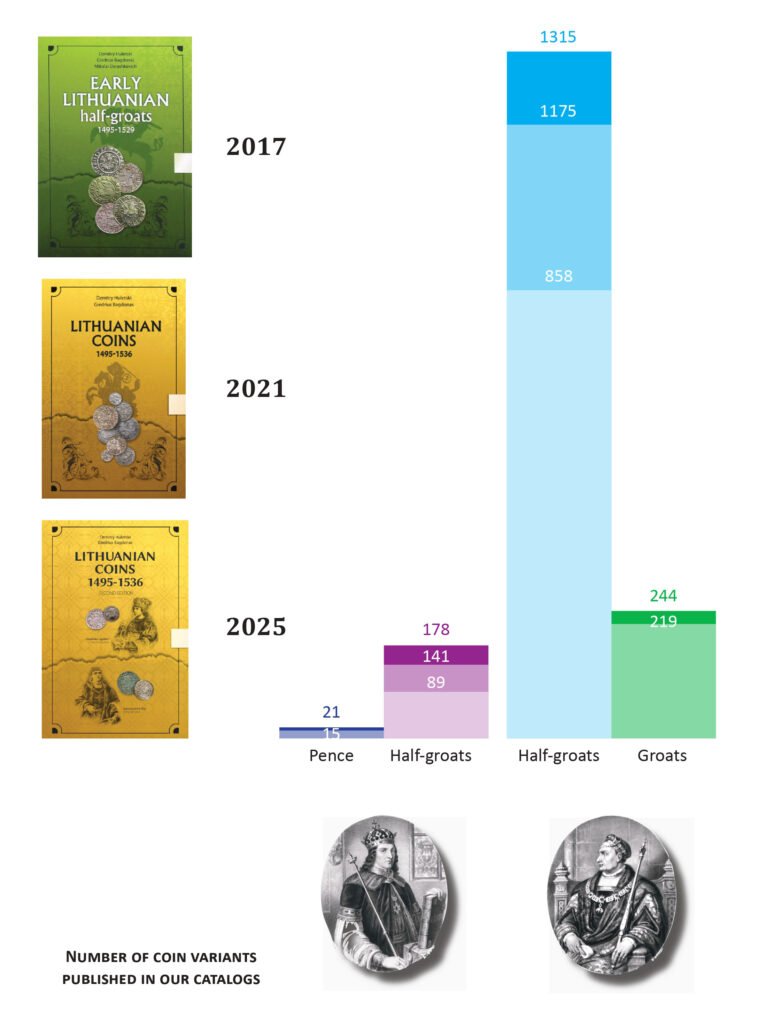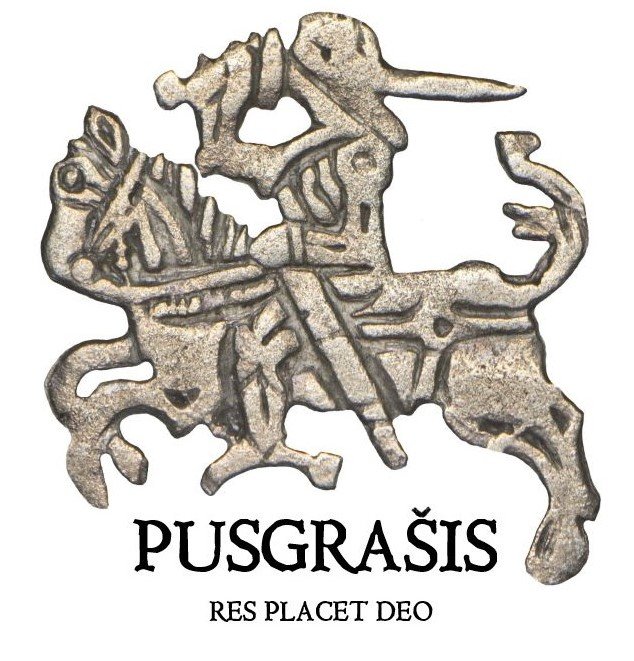For years, we have meticulously gathered data on coins from the Grand Duchy of Lithuania, with a particular emphasis on those minted before the Union of Lublin in 1569. Our research culminated in a crafted triptych of catalogues, intricately designed in the colours of the Lithuanian flag. The centrepiece of our work is a comprehensive catalogue detailing the coinage from the reigns of Alexander and Sigismund the Old.
Join us in advancing numismatic research by supporting our project on Contribee!

Numismatists catalogued Alexander’s and Sigismund the Old’s silvers for a long time, even though without detailed classification. The first comprehensive Lithuanian catalogue was authored by Stanislovas Sajauskas and Domininkas Kaubrys, documenting three variants of Alexander’s penny, 39 variants of his half-groats, 359 variants of Sigismund the Old’s half-groats, and 144 variants of his groats.
By the publication of Eugenijus Ivanauskas’ catalogue in 2013, these figures had grown substantially, with 11 variants of Alexander’s penny, 36 variants of his half-groats, 606 variants of Sigismund’s half-groats, and 169 variants of his groats.

Within two decades, 2005-2025, Giedrius Bagdonas and Dzmitry Huletski advanced the classification of these coins, building upon and greatly enriching the work of their predecessors. So far, we published a series of three catalogues that effectively doubled the number of known variants. While new coins continue to be discovered – thanks to your invaluable contributions, our dear readers – it is evident that the field is nearing saturation, and the compilation of this information is almost complete. As such, this catalogue can already be considered a definitive inventory of the coinage issued under Alexander Jagiellon and Sigismund the Old in Lithuania. We plan to publish updates and supplements in the annual numismatic series “Rus, Lithuania, Horde“.

The series also features the stamp-detailed catalogue of early Lithuanian coins minted before the beginning of the 15th century, as well as the volume documenting Lithuanian counterstamps on Eastern coins from 1421 to 1481. With this foundation, the journey toward a complete corpus of Lithuanian coinage — from the inception of minting to the end of Sigismund the Old’s reign — is nearly complete. The remaining gaps include the grand ducal coinage of Vytautas (Vitovt) and the debated issues linked by various scholars to the same duke, Švitrigaila (Svidrigailo), Sigismund I, and/or Kasimir.


